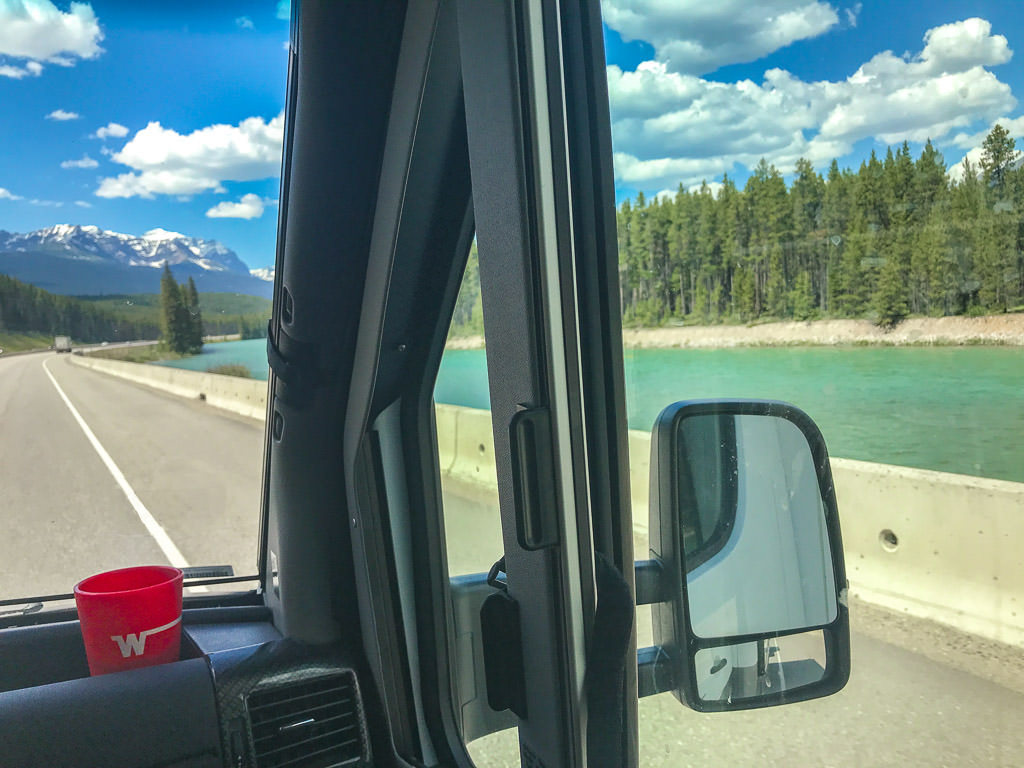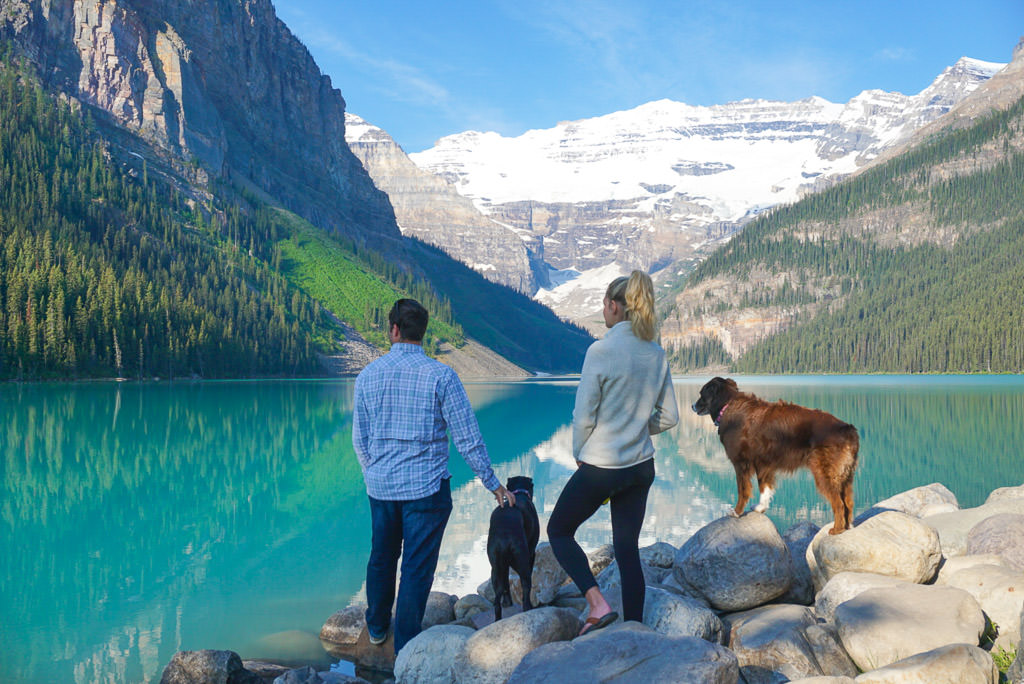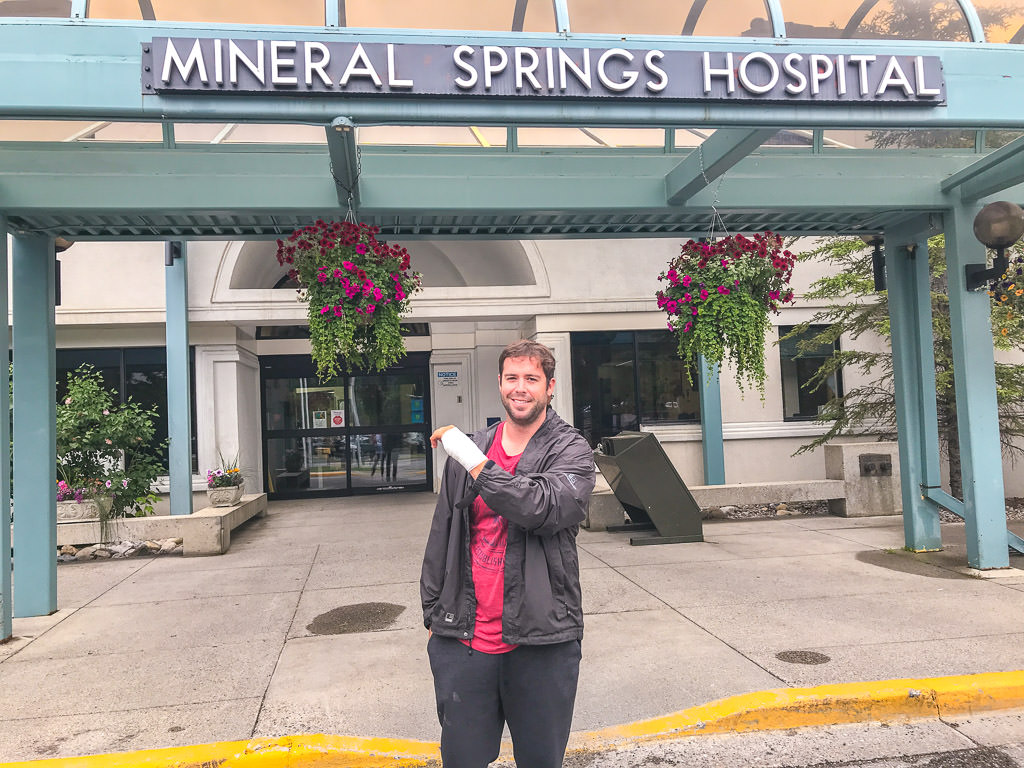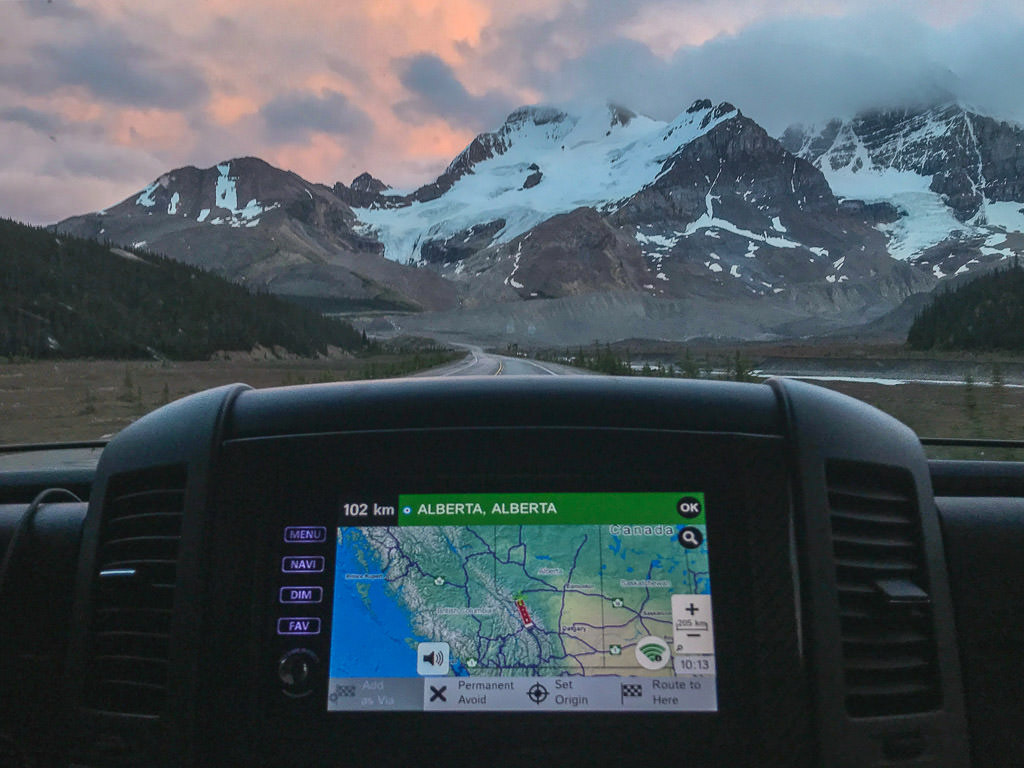
What to Know When RVing in Canada
We all know that the U.S. is full of incredible RVing destinations, but there's something so exciting about the idea of taking a trip beyond the border! This summer we decided to plan a bucket list trip to Banff National Park in Alberta, Canada. It took a little extra planning and preparing, but it was absolutely worth it!
Last fall, we actually tried to take our RV to Canada to visit Niagara Falls. We didn't think much of it, honestly. But as we approached the border, we started browsing the internet for tips on entering Canada in an RV and realized we were too unprepared. We settled on parking in New York and driving our tow car across the border each day to explore the falls and the surrounding areas. So, we weren't going to let that happen again this time!
If you're considering RVing to Canada and starting the planning phase, we hope we can help you prepare. From crossing the border, the differences between RVing there vs. the U.S., and other important things to consider, we'll share it all. Hopefully, with our tips you'll be ready for any chance you get to visit Canada in your RV!

Border crossing basics
The first step in preparing to RV to Canada is checking out the Canada Border Services Agency website. This will be your best resource for knowing what you can and cannot bring across the border. It's also helpful to know what your options are for entry points and their hours of operation, in order to plan your route. The website even has a table with border wait times to help you avoid a long line!
We'll give you a basic outline of what you can and cannot bring, and what you MUST have with you in order to be allowed to cross the border into Canada. But, you'll definitely want to check the agency website for recent changes, or any specific needs or questions you have.
You MUST have:
- Every passenger needs documentation proving your citizenship, such as a passport or birth certificate.
- You'll also need proof of insurance and registration for all vehicles that you are bringing into Canada.
- The border patrol officer will also ask for your license plate number, so it's helpful to have that handy or memorized
- Lastly, you must be prepared to tell the officer why you are entering Canada, where you are headed, how long you'll be staying, etc. So, make sure you have your trip planned out and are ready to share!
What you can and can't bring:
Let's get the items you cannot bring with you out of the way first. Firearms, ammunition, weapons, explosives, and fireworks must be declared, and are typically not allowed.
Other than that, you can bring almost anything with you in your RV, there's just some requirements and limitations to a few items. Since many plants, animals, and certain foods can carry disease, these are the items to research ahead of time. Certain meats, dairy, and produce may not be allowed, so try not to do your grocery shopping before crossing the border.
Alcohol and tobacco is allowed in limited quantities, however, and you cannot carry more than $10,000 in cash with you. Prescriptions and medications are fine, as long as they are in their original containers and packaging.

Bringing pets
Don't worry! You can bring along your furry family members too. With an official, current rabies certificate, cats and dogs are welcome into Canada. The Canada Border Services Agency website also states that pet food must be commercially packaged. As for other pets, like reptiles, rodents, and birds, you'll want to refer to their website for more information. (Amy of GoPetFriendly has some more tips on bringing pets to Canada in this previous GoLife article.)
All of the items listed above must be declared at the border. This doesn't necessarily mean they will confiscate them, but it's best to be honest up front. We've heard, more often than not, that crossing the border in your RV is a breeze. We had no problems whatsoever and only had to give up an orange on our way back into the U.S. Just be as prepared as you can be, cooperative, and friendly to the officers, and you'll be fine!
RVing in Canada vs. the U.S.
Overall, RVing in Canada felt very similar to RVing in the U.S. In fact, there were RVs all over the road! The only major difference we noticed while in Alberta and British Columbia, was that it's not as easy to find public land to dry camp or "boondock" on. You can find free "overflow" parking lots in some areas, but we didn't want to rely on that. We felt safest with making reservations in campgrounds, which there are plenty of.
Other important things to consider
Any time you are planning to visit another country, there are certain things to keep in mind and precautions to take. Visiting Canada, as similar as it is to America, is no different. Here are a few things to be aware of:
Cellular service
Check with your cell phone provider to ensure you'll have coverage in Canada. Some carriers include Canada as part of the domestic talk and data plans, but may have daily data usage limits. Other carriers and plans may not include Canada and could incur roaming charges.
Medical
Accidents and emergencies tend to happen at the most inconvenient times, and we learned this the hard way. Check your policy to see if you are covered internationally, or consider purchasing travel insurance. Be aware that Canada will not accept U.S. health insurance. If you do find yourself at a Canadian hospital or doctor's office, you'll be required to pay for services up front. If you are covered under your health insurance, you can submit the bills to be reimbursed later, however. We were thankful to have our health savings account (HSA) during our unexpected ER trip!

Cost differences
It is true that many items in Canada are slightly more expensive than in the U.S., especially gas and food. You'll want to keep this in mind and maybe "stock up" on certain everyday items and essential groceries ahead of time. It wouldn't hurt to fill up your gas tank right before crossing the border, too. And of course, Canadians have a different currency, so don't be confused by the dollar sign when making purchases and be sure to check the daily exchange rate.
Metric system
Canada, like most other countries, uses the metric system. Related to RVing, you'll want to familiarize yourself with certain conversions. It is also important to know how tall your RV is in meters and the weight in tonnes as well as kilograms for when you need to go under or over a bridge. You'll also be buying gas by the liter instead of by the gallon (approximately 4 liters = 1 gallon).
You'll also notice right away that speed and distance is in kilometers instead of miles. While some GPS systems can be switched to kilometers, it is still good to have a rough estimate of the conversion.
The common speed limits are 110 km/h, 90 km/h, and 50 km/h. So, here are some helpful conversions to know:
- 110 km/h = 68 mph
- 90 km/h = 55 mph
- 50 km/h = 31 mph

Don't pass up the opportunity to visit Canada in your RV! It's an incredibly beautiful country and having your RV allows you to see and explore more of it at your own pace. We hope that by sharing our experience with RVing to Canada, we help inspire you to take your own trip, know how to prepare, and have as great of a time as we did. (For a video version of these tips, watch our Winnebago Facebook Live session here).
Comments
Comments on this post are moderated, so they will not appear instantly. All relevant questions and helpful notes are welcome! If you have a service inquiry or question related to your RV, please reach out to the customer care team directly using the phone numbers or contact form on this page .